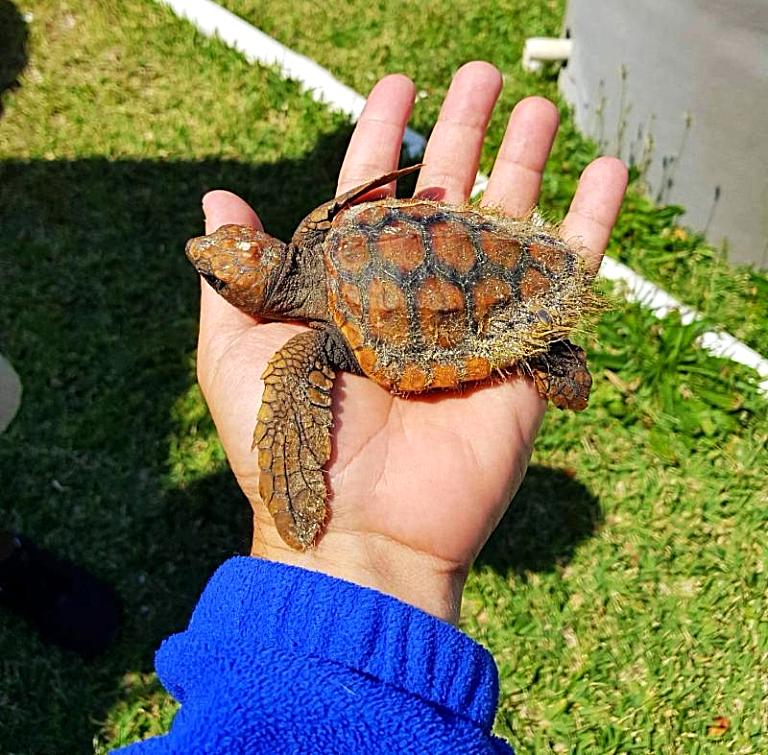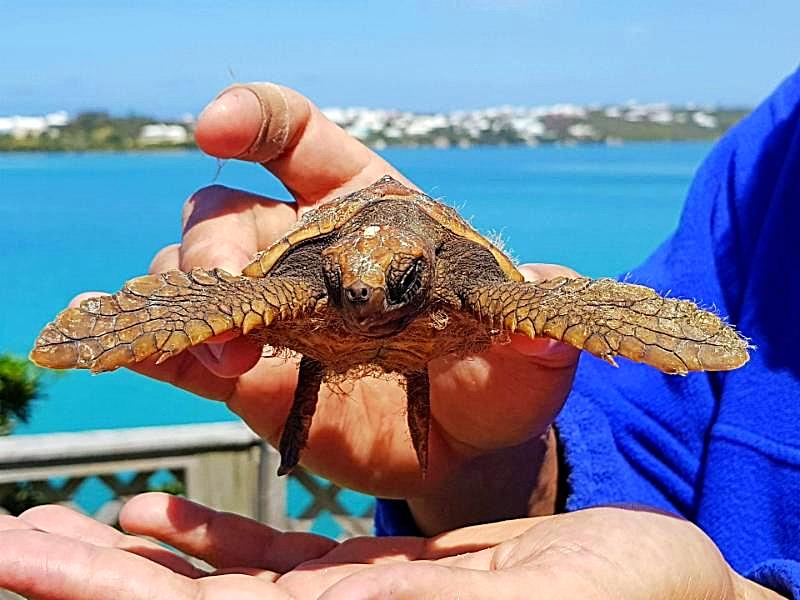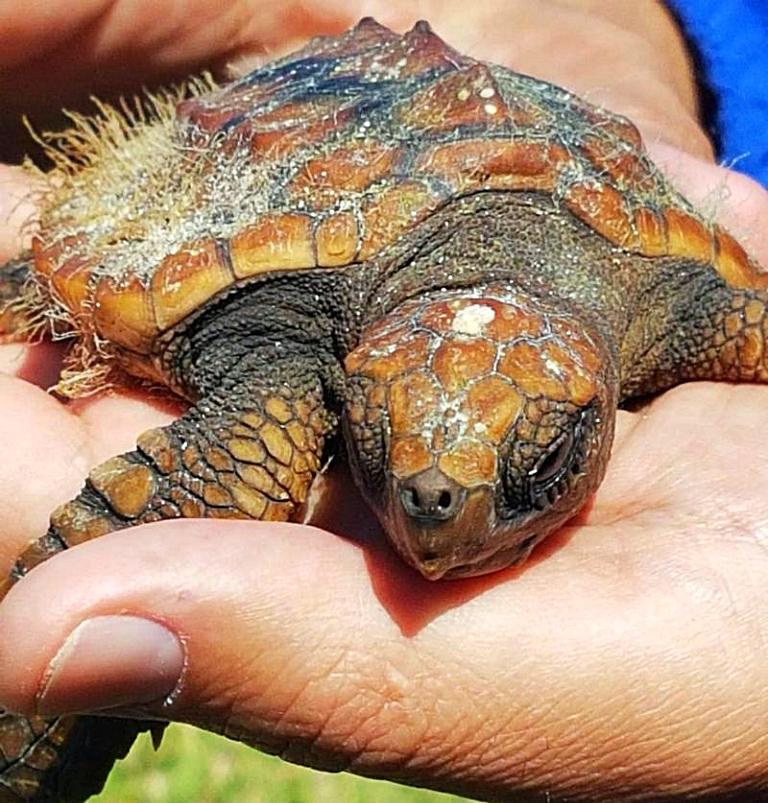Recent News
Historic deep sea dive off Bermuda to be celebrated in New YorkWednesday, August 13, 2014
A New York institution is this week preparing to celebrate the 80th anniversary of naturalist William Beebe’s historical Bathysphere dive off the coast of Bermuda.
Turtles fall victim to boats and fishing hooks
Wednesday, August 13, 2014
The public is again being asked to be careful on the Island’s waters to protect sea turtles after the bodies of several young turtles were found with injuries related to human activity.
Photos: Ocean Vet Team Tags Turtles
Monday, August 11, 2014
Dr. Neil Burnie, Choy Aming, and the rest of the Ocean Vet team recently spent a day tagging turtles for tracking, assisting Peter Meylan and Jennifer Gray from the Bermuda Turtle Project.
BAMZ Welcomes Three New Tammar Wallabies
Saturday, August 09, 2014
The Bermuda Aquarium, Museum, and Zoo [BAMZ] recently acquired three wild Tammar Wallabies, including two males and a female, all in an effort to help New Zealand to control the population of the species in that country.
Shark puts on an impressive show for film crew
Saturday, August 09, 2014
Spectacular footage of Bermuda’s tiger sharks has been captured by local photographer Choy Aming in a dive alongside ‘Ocean vet’ Neil Burnie, and is set to air on network TV.
About
GovernanceAbout Us
Newsletter
Latest News
Gift & Bookstore
Contact
General Inquiries
info@bzs.bm
Latest News
All the latest updates and news from the Bermuda Aquarium, Museum, and Zoo, one of Bermuda's leading visitor attractions!
Excerpt from WILD News May 2018

This is Sheldon, a juvenile loggerhead turtle. Between December and March juvenile sea turtles (loggerheads, hawksbills and green sea turtles) will be swept up past Bermuda as they drift with their transient home of Sargassum. Sargassum is brown algae found in the Atlantic Ocean that forms dense floating masses called rafts which provide shelter, transport and food for many organisms. During this stage of their life (post hatchling), turtles are carried around with the currents. The Sargassum provides food such shrimp, tiny crabs and fish. Sea turtles eat whatever floats by and this often gets them into trouble. The Sargasso Sea is located in the North Atlantic Gyre and collects lots of microplastics. Sea turtles are not picky eaters and may eat the plastics This can cause an impaction of their digestive tract which can be life-threatening.


As they pass by Bermuda, they may be washed ashore by a winter storm or get picked up by birds that later drop them. As a result, these little critters can end up on one of our beaches or dropped amongst the rocks. The Wildlife Rehabilitation Department at BAMZ sees one or two post hatchling sea turtles a year. These post hatchlings are three to four inches in length and tend to be thin and exhausted from their journey. Because of their tiny size, they may have sustained injuries from predator attacks. We monitor them and give them time to rest and regain strength. Any injuries are treated and an appropriate amount of time is given to heal. We wait until the water warms up and we see large rafts of Sargassum returning offshore (May or June) before releasing them. By this time they have grown six to eight inches long. The release is done offshore so they can pick up the currents under a Sargassum raft and continue on their ocean journey. They will return to Bermuda again in 3-4 years as they move from their pelagic lifestyle to the reef shelf.

The current juvenile loggerhead was found on the beach at Willowbank on March 30, 2018. It appears healthy and is gaining weight. We hope to get it back out to the big blue in the near future. Note the tank it is currently in is actually the perfect spot for it at the moment. It would normally be in the open ocean all day in a vast sea of blue, and only given shelter by a Sargassum raft. The blue background is exactly what it would be seeing in the wild. Also, we can't tell the sex of the turtle at this age without a blood sample, so the sex remains unknown.



